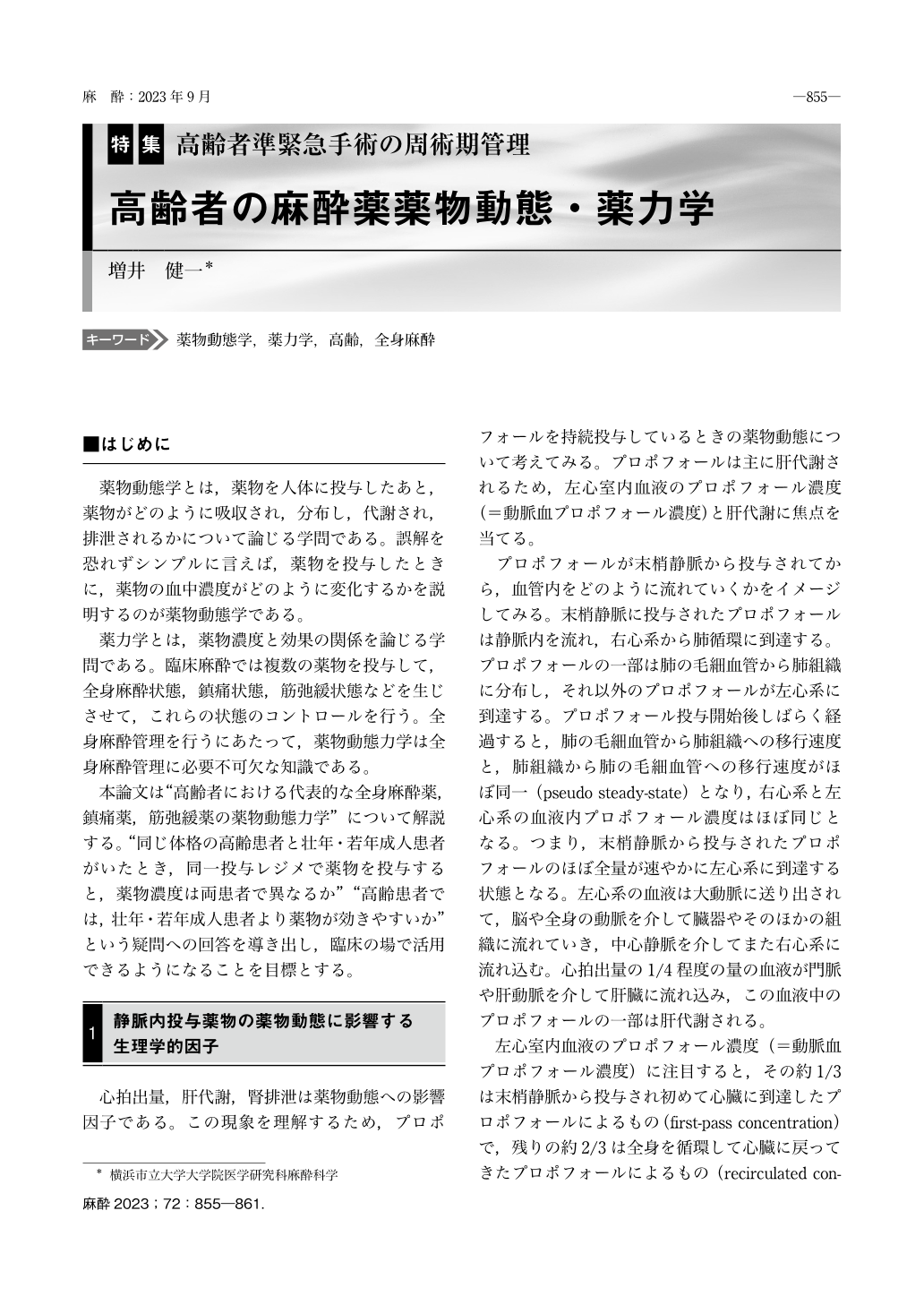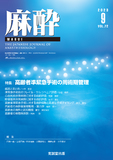Japanese
English
- 有料閲覧
- Abstract 文献概要
- 1ページ目 Look Inside
- 参考文献 Reference
はじめに
薬物動態学とは,薬物を人体に投与したあと,薬物がどのように吸収され,分布し,代謝され,排泄されるかについて論じる学問である。誤解を恐れずシンプルに言えば,薬物を投与したときに,薬物の血中濃度がどのように変化するかを説明するのが薬物動態学である。
薬力学とは,薬物濃度と効果の関係を論じる学問である。臨床麻酔では複数の薬物を投与して,全身麻酔状態,鎮痛状態,筋弛緩状態などを生じさせて,これらの状態のコントロールを行う。全身麻酔管理を行うにあたって,薬物動態力学は全身麻酔管理に必要不可欠な知識である。
本論文は “高齢者における代表的な全身麻酔薬,鎮痛薬,筋弛緩薬の薬物動態力学” について解説する。“同じ体格の高齢患者と壮年・若年成人患者がいたとき,同一投与レジメで薬物を投与すると,薬物濃度は両患者で異なるか” “高齢患者では,壮年・若年成人患者より薬物が効きやすいか” という疑問への回答を導き出し,臨床の場で活用できるようになることを目標とする。
To understand the pharmacokinetics and pharmacodynamics in elderly patients during general anesthesia, the influence of physiology, such as cardiac output, hepatic metabolism, and renal extraction, on the pharmacokinetics of intravenous drugs should be learned. Total plasma concentration of an intravenous drug is the sum of the first-pass concentration and recirculated concentration. First-pass concentration is influenced by the cardiac output. When the cardiac output doubles, the first-pass concentration halves. As elderly patients generally have lower cardiac output, the plasma concentrations of an intravenous drug during a continuous infusion would increase.
Propofol pharmacokinetics and pharmacodynamics are influenced by age. As the Marsh model, which is generally used to predict propofol concentration in Japan, does not have age as a covariate, the model may overpredict the propofol concentration in elderly patients. The pharmacokinetics and/or pharmacodynamics of inhalation anesthetics, remimazolam, fentanyl, remifentanil, and rocuronium are influenced by age. Generally, lower dose and lower infusion rate are necessary in elderly patients. Note that some elderly patients need doses and infusion rate similar to those in younger patients because of the large interindividual variabilities of pharmacokinetics and pharmacodynamics. To avoid excessive dose, appropriate drug dosing is necessary with the assessments of the effect of administered drugs.

Copyright © 2023 KOKUSEIDO CO., LTD. All Rights Reserved.


